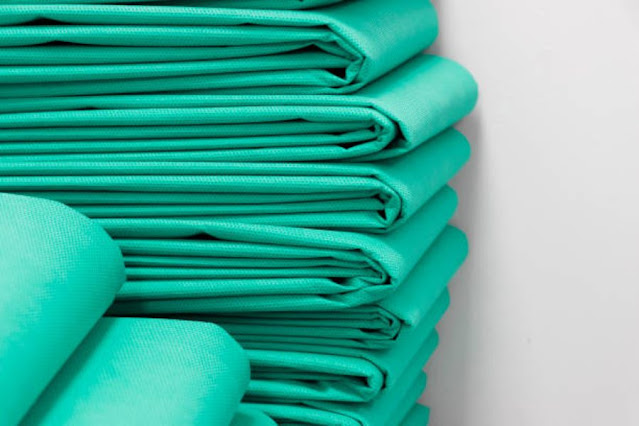
I. Eco-friendly Fabrics and Environmental Impact:
A. Organic Cotton:
Reduced pesticide use and water consumption.
Promotes biodiversity and soil health.
B. Hemp:
Requires minimal water and chemical inputs.
Fast-growing and adaptable to various climates.
Biodegradable and recyclable.
C. Bamboo:
Rapid growth and minimal resource requirements.
Natural antibacterial properties.
Soft, breathable, and versatile.
D. Recycled Fabrics:
Diverting waste from landfills.
We are reducing energy consumption and carbon emissions.
We are encouraging circular economy practices.
II. Health Benefits of Eco-friendly Fabrics:
A. Reduced Chemical Exposure:
Conventional fabrics and their impact on human health.
Organic and natural fibers as a safer alternative.
I am avoiding allergenic and toxic substances.
B. Enhanced Comfort and Breathability:
Natural fibers allow better airflow and moisture absorption.
We are promoting skin health and preventing skin
irritations.
We are improving overall comfort and well-being.
C. Antibacterial and Hypoallergenic Properties:
Bamboo and its natural antimicrobial qualities.
Organic cotton and reduced exposure to allergens.
Suitable for sensitive skin and individuals with allergies.
D. Biodegradability and Reduced Microplastic Pollution:
Synthetic fabrics and microplastic pollution.
Eco-friendly fabrics break down naturally.
We are mitigating environmental harm and protecting aquatic
ecosystems.
III. Innovations and Challenges in Eco-friendly Fabrics:
Development of plant-based and bioengineered fabrics.
Implementation of sustainable dyeing and finishing
processes.
Advancements in fabric recycling technologies.
B. Supply Chain Transparency and Ethics:
Traceability of materials and production practices.
Fairtrade and worker welfare in eco-friendly fashion.
They are ensuring the social sustainability of the industry.
C. Consumer Awareness and Education:
The role of education in promoting eco-friendly choices.
We are encouraging conscious consumption and responsible
fashion.
Collaboration between stakeholders to raise awareness.
IV. Conclusion:
Eco-friendly fabrics offer a promising solution to address
the environmental challenges the fashion industry poses while promoting health
and well-being. Individuals can reduce their exposure to harmful chemicals by
opting for sustainable fashion, enjoying improved comfort, and contributing to
a cleaner and healthier environment. However, the widespread adoption of
eco-friendly fabrics requires continued innovation, supply chain transparency,
and consumer education. By working together, we can create a fashion industry prioritizing
sustainability and human health, paving the way for a greener and more
conscious future.
Developing plant-based and bioengineered fabrics represents
an exciting and innovative approach to the fashion industry's quest for
sustainable and eco-friendly materials. These fabrics offer numerous benefits,
including reduced environmental impact, improved resource efficiency, and the
potential for new and exciting textile properties. In this section, we will
explore the development of plant-based and bioengineered fabrics, their
advantages, and the challenges associated with their implementation.
Plant-Based Fabrics:
Organic Cotton: Biological cotton is grown without synthetic
pesticides or genetically modified seeds. It requires less water and promotes
soil health.
Hemp: Hemp is a fast-growing plant that requires minimal
water and pesticides. It produces solid and durable fibers suitable for a
variety of applications.
Linen: Linen is resultant from the flax plant and is identified
for its breathability and moisture-wicking belongings. It requires fewer
resources compared to other fabrics.
Plant-Based Alternatives:
Piñatex: Piñatex is a fabric made from pineapple leaf
fibers. It is a byproduct of the pineapple industry, reducing waste and
promoting sustainable practices.
Soy Silk: Soy silk is made from the byproducts of soybean
oil production. It offers a silk-like texture and is biodegradable.
Seaweed Fabric: Seaweed-based fabrics utilize the
sustainable cultivation of seaweed, which requires no land, fresh water, or
fertilizers. It offers unique properties such as antibacterial and UV
protection.